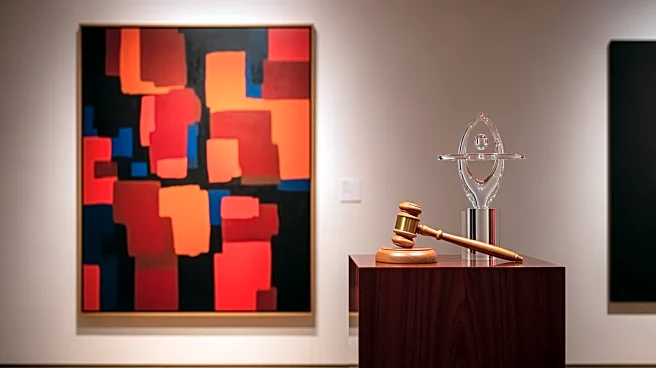What's Happening?
Gustav Klimt's painting, 'Portrait of Elisabeth Lederer,' sold for a record $236.3 million at Sotheby's in New York. The auction marked the first marquee evening sale at Sotheby's new location in the former Whitney Museum of Modern Art building. The painting, which
depicts Elisabeth Lederer, the daughter of Jewish industrial magnate August Lederer, was seized by Nazis in 1939 and returned to the family after World War II. It has been part of Leonard A. Lauder's collection since the 1980s. The sale surpassed previous records for Klimt's works and became the second-most valuable artwork ever sold at auction, following Leonardo Da Vinci's 'Salvator Mundi.'
Why It's Important?
The sale of Klimt's 'Portrait of Elisabeth Lederer' highlights the enduring value and historical significance of art pieces with complex provenance. The record-breaking auction underscores the strong demand for masterpieces with rich histories, particularly those connected to significant cultural and historical narratives. This event also reflects the robust market for high-value art, which can influence the valuation of other works and collections. The sale is a testament to the importance of preserving and recognizing art that has survived tumultuous periods, such as Nazi confiscation, and its eventual restitution to rightful owners.
What's Next?
Following the successful auction, Sotheby's may continue to attract high-profile consignments and bidders, further solidifying its position in the art market. The sale could prompt other collectors to bring similarly significant works to auction, potentially leading to more record-breaking sales. Additionally, the auction's success may encourage museums and galleries to explore partnerships or loans with private collectors to enhance public access to important artworks.
Beyond the Headlines
The sale of Klimt's painting also raises questions about the ethical considerations of art restitution and the responsibilities of auction houses in handling works with complex histories. The provenance of artworks, especially those affected by wartime looting, remains a critical issue in the art world. This auction serves as a reminder of the ongoing efforts to address historical injustices and the role of art institutions in facilitating these processes.














